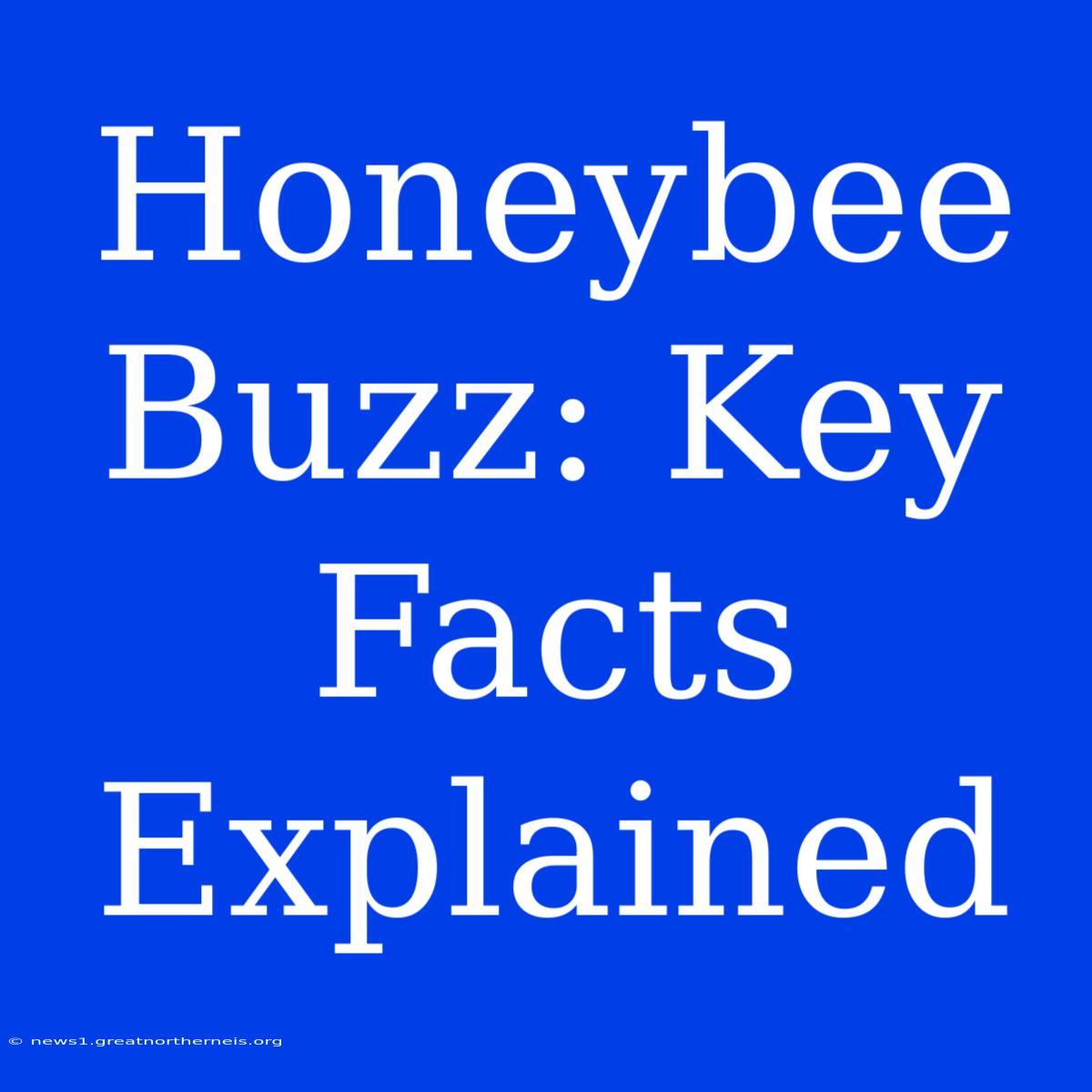Honeybee Buzz: Key Facts Explained
What are Honeybees? These tiny, buzzing creatures are more than just the source of delicious honey; they play a crucial role in our ecosystem. Honeybees are essential pollinators, contributing significantly to the world's food supply. Editor Note: This article delves into the fascinating world of honeybees, providing essential facts about these industrious insects.
Why is this topic important? Honeybees face numerous threats, including habitat loss, pesticide use, and climate change. Understanding these threats and learning about honeybee biology is crucial for protecting these vital pollinators.
Our Approach: We have thoroughly researched and analyzed information from reputable sources to create this comprehensive guide. We aim to provide you with essential insights into honeybee biology, their crucial role in pollination, and the challenges they face.
Key Takeaways
| Key Aspects | Description |
|---|---|
| Social Structure | Honeybees live in colonies with a queen, workers, and drones. |
| Pollination | Honeybees play a critical role in pollinating flowers, ensuring the production of fruits and vegetables. |
| Honey Production | Honeybees collect nectar and pollen to produce honey, their food source. |
| Threats to Honeybees | Habitat loss, pesticides, and climate change pose significant threats to honeybee populations. |
Honeybee Biology
Social Structure
Honeybees live in highly organized colonies, each with a specific social structure. The colony is ruled by a queen bee, whose primary function is to lay eggs. Worker bees, all female, perform various tasks within the hive, such as foraging for nectar and pollen, building and maintaining the honeycomb, and caring for the queen and young. Drone bees, male bees, are responsible for mating with the queen.
Pollination
Honeybees are essential pollinators, playing a vital role in the reproduction of many plants. As they collect nectar and pollen from flowers, pollen grains cling to their bodies. These pollen grains are then transferred to other flowers, enabling pollination and the production of seeds and fruits.
Honey Production
Honeybees collect nectar from flowers, which they store in their honey sacs. Back at the hive, they deposit the nectar into honeycomb cells, where it undergoes a process of evaporation and enzymatic breakdown. The resulting honey is a concentrated sugar solution, providing the colony with a crucial energy source.
Threats to Honeybees
Habitat Loss
As human populations grow, natural habitats are increasingly fragmented and destroyed, reducing the availability of food sources and nesting sites for honeybees.
Pesticides
The use of pesticides can harm honeybees directly, leading to poisoning or death. Pesticides can also disrupt the bees' navigation and communication abilities, making it difficult for them to find food and return to their hives.
Climate Change
Climate change can lead to extreme weather events, such as droughts and floods, which can impact honeybee populations. Changing weather patterns also disrupt plant growth, making it more difficult for bees to find food.
FAQs about Honeybees
FAQ
| Question | Answer |
|---|---|
| What is the lifespan of a honeybee? | The lifespan of a honeybee varies depending on its role in the colony. Queen bees can live for several years, while worker bees typically live for only a few weeks. |
| Are honeybees aggressive? | Honeybees are generally not aggressive unless they feel threatened. However, if disturbed, they may sting to defend their hive. |
| How can I help honeybees? | You can help honeybees by planting bee-friendly flowers, avoiding the use of pesticides, and supporting local beekeepers. |
| Why are honeybees important? | Honeybees are essential pollinators, contributing significantly to the world's food supply. |
| Are there different types of honeybees? | There are several types of honeybees, including the European honeybee (Apis mellifera), the Africanized honeybee (Apis mellifera scutellata), and the Asian honeybee (Apis cerana). |
| What is the difference between a honeybee and a wasp? | Honeybees are generally more hairy than wasps and have a more rounded body shape. Wasps have a more slender body and a pointed abdomen. |
Tips for Supporting Honeybees
Tips for Supporting Honeybees
- Plant a bee-friendly garden: Include a variety of flowering plants that bloom throughout the year.
- Avoid pesticides: Choose organic gardening products or consider natural pest control methods.
- Provide a water source: A shallow dish with pebbles or a bird bath filled with water can provide bees with a place to drink.
- Support local beekeepers: Purchase honey and other bee products from local beekeepers.
- Educate others: Share information about the importance of honeybees with your friends and family.
Summary of Honeybees
This article provided a comprehensive overview of honeybee biology, their vital role in pollination, and the threats they face. Understanding these aspects is essential for protecting honeybee populations and ensuring the continued pollination of crops and wild plants.
Closing Message
Honeybees are an integral part of our ecosystem, contributing significantly to the world's food supply. By understanding their importance and taking steps to protect them, we can ensure the continued survival of these essential pollinators.

